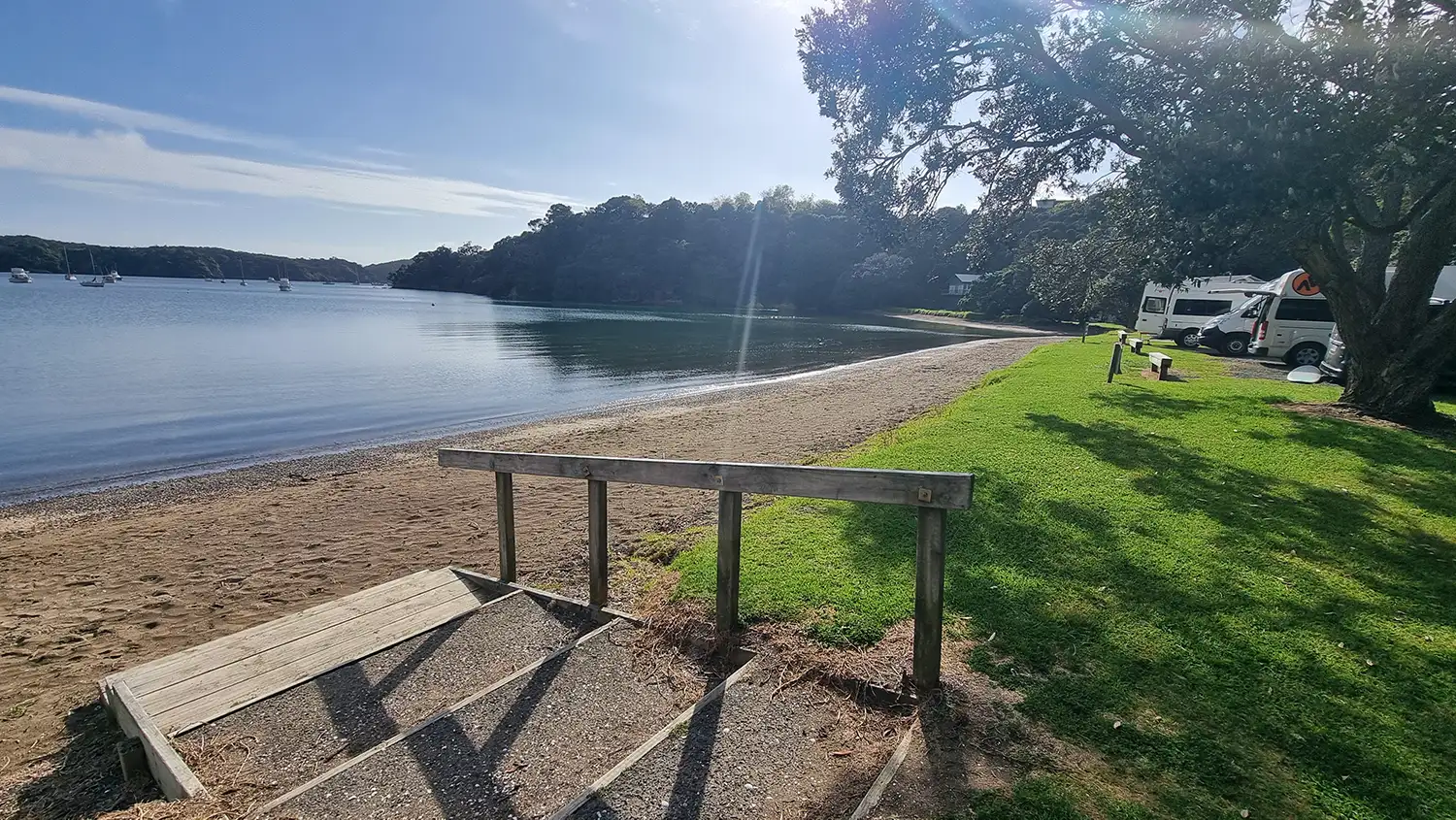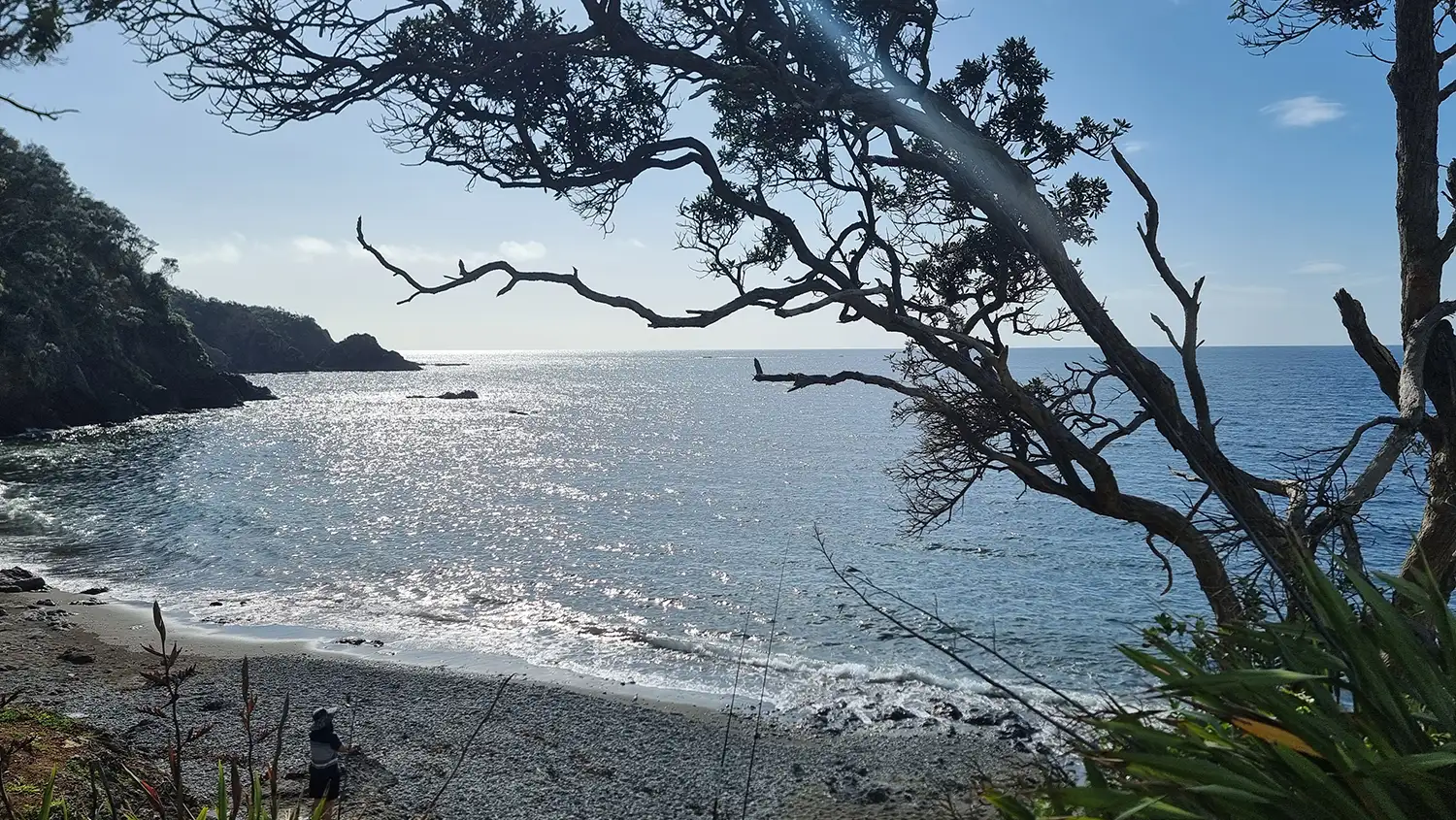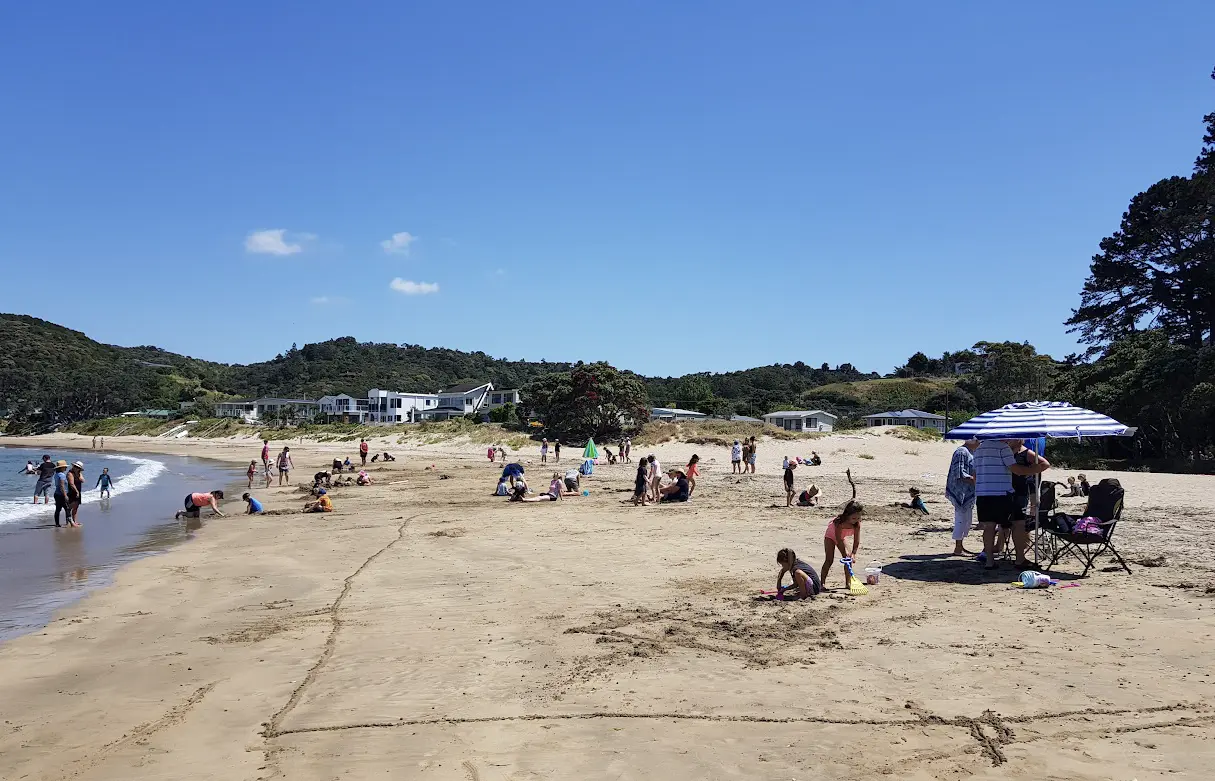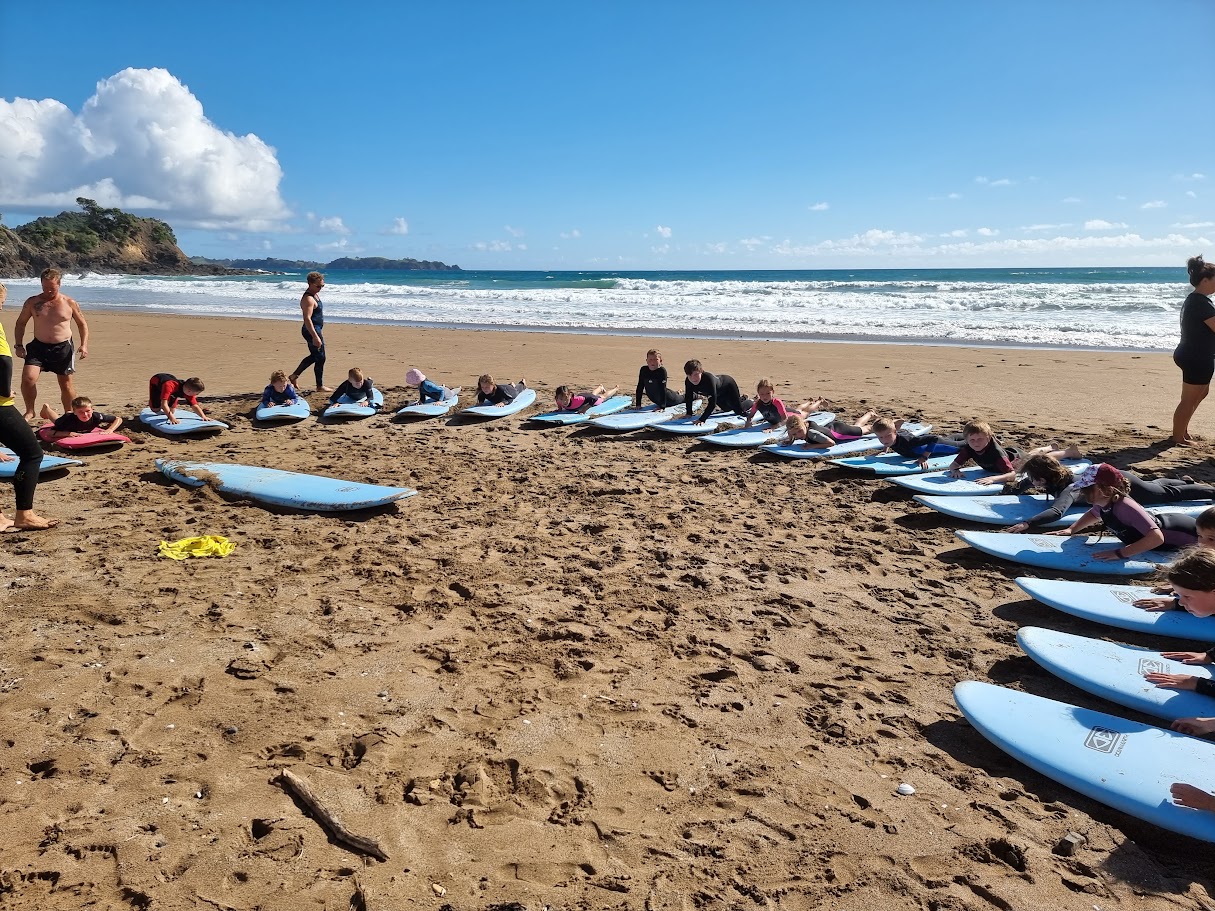Kowharewa Bay: The Tutukaka Coast’s Peaceful Harbour Haven
Tucked inside Tutukaka Harbour, away from the ocean swells that pound the outer beaches, Kowharewa Bay is one of those quietly perfect spots that locals have been enjoying for generations. This small, sheltered pebble beach along Tutukaka Block Road might not have the dramatic white sand of Matapouri or the fame of Whale Bay, but that’s exactly what makes it special. As someone who’s explored every nook of the Tutukaka Coast, Kowharewa Bay offers something increasingly rare – a genuinely peaceful waterfront spot where you can still launch a kayak without fighting for parking, let kids swim safely in calm water, or simply sit and watch life go by.
Finding Your Way to Kowharewa Bay
Getting to Kowharewa Bay is pretty straightforward. From Whangārei, it’s about 30km (19 miles) northeast, roughly a 30-minute drive. Head through Tikipunga following signs for the Tutukaka Coast, passing through Ngunguru before reaching the turnoff to Tutukaka Block Road. The winding road takes you past Church Bay, with Kowharewa Bay about 2km (1.2 miles) along.
The beauty of Tutukaka Block Road is that it strings together a collection of sheltered harbour bays; Church Bay, Kowharewa Bay, Pacific Bay, and eventually Whangaumu Bay (Wellington’s Bay). Each has its own character, but they share that protected, inside-the-harbour quality that makes them perfect for families and water sports when the outer beaches are too rough.
Parking is available right beside the small reserve, with space for perhaps a dozen cars. Unlike some of the more popular beaches where you need to arrive at dawn in summer to secure a spot, Kowharewa Bay rarely fills up completely, even on busy weekends.
The Bay Itself: A Different Kind of Beautiful
Kowharewa Bay won’t take your breath away with dramatic cliffs or pristine white sand. Instead, it offers a more subtle beauty. A peaceful beach curving gently around calm harbour waters, backed by a grassy reserve with established Pohutukawa trees providing shade. The beach is a mixture of sand, shells and small, smooth pebbles.
The bay faces into Tutukaka Harbour, completely protected from ocean swells. This orientation means the water here is almost always calm, making it ideal for safe swimming, especially at high tide when it’s perfect for a relaxing swim. At low tide, the water retreats significantly, exposing mudflats that are great for bird watching and shellfish gathering (check local regulations first), though less suitable for swimming.
What strikes me most about Kowharewa Bay is its authenticity. This isn’t a beach that’s been prettied up for tourists. It’s a working part of the community, with local boats on moorings, kids learning to kayak, and residents walking dogs in the evening. You’re more likely to see outrigger canoe paddlers training after work than tourist buses.
Water Activities: Calm Waters, Endless Possibilities
The sheltered nature of Kowharewa Bay makes it absolutely brilliant for certain water activities that would be challenging or dangerous at the exposed beaches. This is prime kayaking territory – you can launch easily from the beach and explore the harbour’s numerous other bays, many of which have no road access. The calm conditions mean even beginners can paddle confidently here.
Stand-up paddleboarding has become increasingly popular at Kowharewa, and for good reason. The protected waters are perfect for learning, and once you’re confident, you can explore the entire harbour. Paddle to the Tutukaka Marina for coffee before returning for a proper morning workout!
The bay also has a boat ramp directly across the road, making it popular with local boat owners who appreciate the easy access and protected launching conditions. Small sailing dinghies and trailer boats can launch here without the drama of trying to navigate breaking waves.
Swimming is best at high tide or within a couple of hours either side. The water quality is regularly monitored by Northland Regional Council, and it generally tests well within safe swimming guidelines. As with all Northland beaches, avoid swimming for 2-3 days after heavy rain when runoff can affect water quality.
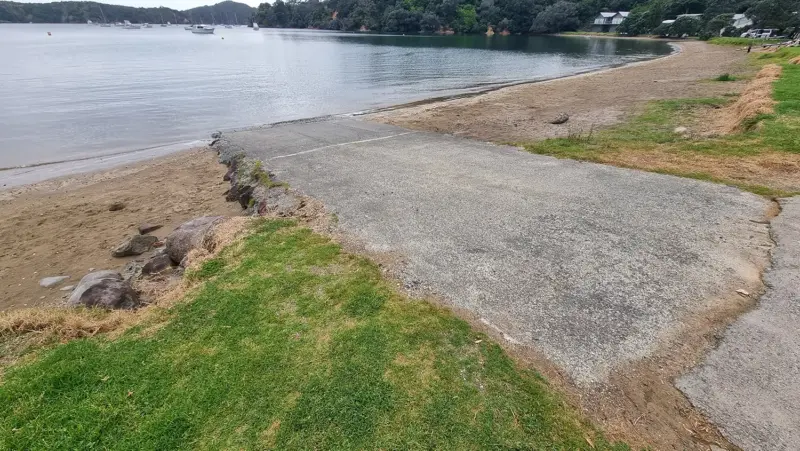
Wildlife and Natural Features
The tidal nature of Kowharewa Bay creates a dynamic ecosystem. At low tide, the exposed mudflats attract numerous wading birds – oystercatchers, herons, and various species of sandpipers are regular visitors. There are occasionally dolphins, and I’ve heard reliable reports of penguins being spotted from shore, though I haven’t been lucky enough to see them myself.
The bay has traditionally been used by Māori as a food gathering area and safe anchorage. The sheltered waters and abundant shellfish made these beaches important seasonal camps. Today, you can still see people gathering pipis and cockles at low tide, continuing traditions that go back centuries.
Facilities: Simple but Sufficient
Kowharewa Bay keeps things basic, which suits its low-key character perfectly. The public toilets are clean and well-maintained, with flushing toilets, running water (not potable, so don’t drink it), and soap. They’re serviced regularly, and I’ve always found them in good condition.
The grassy reserve has some picnic tables scattered about, perfect for a simple lunch or barbecue. There’s no playground or formal facilities, but the open grass area is great for kids to run around, and the beach itself provides endless entertainment for young ones – shell and pebble collecting seems to be a universal childhood obsession.
The freedom camping area is one of the better ones in the district. With space for 4-5 small campervans (maximum 6m/20 feet length), it offers direct water views and those essential toilet facilities. Camping is limited to one night in any calendar month, and the area is closed to campers between December 18 and February 8. Rangers do check compliance, so stick to the rules if you want to keep these spots available. Tents are strictly prohibited.
Many campers use Kowharewa as a base for exploring the Tutukaka Coast, particularly those planning to dive the Poor Knights the next day. The proximity to Tutukaka Marina (5 minutes’ drive) makes it perfect for early morning dive departures.

The Te Maika Headland Walkway
One of Kowharewa Bay’s best features is its connection to the Te Maika Headland Walkway, which links Pacific Bay, Church Bay, Kowharewa Bay, and Whangaumu Bay. This network of tracks offers various walking options, from short 15-minute strolls to longer coastal explorations.
From Kowharewa Bay, you can walk to neighbouring Church Bay in about 20 minutes along the headland track. The path offers lovely harbour views and passes through regenerating native bush. It’s not a challenging walk, and suitable for most fitness levels but proper footwear is recommended as the track can be muddy after rain.
For a longer adventure, you can continue around to Pacific Bay and even connect with the track system that leads up to the Tutukaka Block Road ridge, offering panoramic views over the harbour and out toward the Poor Knights Islands. The full circuit takes about 90 minutes at a leisurely pace.
Nearby Attractions and Alternatives
Kowharewa Bay’s location on Tutukaka Block Road means you’re perfectly positioned to explore other nearby beaches. Church Bay, just 500m (0.3 miles) away, offers similar calm conditions with its own boat ramp and slightly sandier beach. Pacific Bay, accessed via Dolphin Place, has a fantastic walking track that climbs to a trig station with superb 360-degree views. Definitely worth the steep 15-minute climb.
Tutukaka Marina is only 5 minutes away by car, where you can book diving or snorkelling trips to the Poor Knights Islands, grab a meal at one of the waterfront restaurants, or simply enjoy a coffee while watching the boats. Schnappa Rock Restaurant and the Marina Pizzeria are both excellent, though they get busy in summer.
If you’re after surf or more dramatic scenery, Sandy Bay is about 10 minutes north—one of Northland’s most popular surf beaches and a complete contrast to the calm waters of Kowharewa. Matapouri Bay and Whale Bay are also within easy reach, offering those picture-perfect white sand beaches if that’s what you’re after.
When to Visit
Kowharewa Bay is genuinely a year-round destination, though each season offers different experiences. Summer (December through February) sees the warmest water and most activity; families swimming, kayakers exploring, and the freedom camping spots full most nights. This is when the bay is at its most social, with community picnics and informal gatherings common on weekends.
Autumn (March through May) might be my favourite time. The water’s still warm, the crowds have thinned, and the light has that golden quality that makes evening paddles magical. The autumn months are perfect for kayaking, with generally calm conditions and comfortable temperatures.
Winter (June through August) transforms the bay into a peaceful retreat. While too cold for most people to swim, it’s perfect for launching kayaks (with appropriate gear), bird watching, and quiet beach walks. The freedom camping spots are usually available, and you’ll often have the entire bay to yourself on weekdays.
Spring (September through November) brings renewed energy to the bay. This is when local paddling groups start their evening training sessions again, and the first brave swimmers of the season test the waters.
Local Tips and Insights
Timing with the tides makes a huge difference at Kowharewa Bay. For swimming, aim for high tide or within two hours either side. For exploring the shoreline or gathering shellfish, low tide reveals the bay’s hidden treasures. Check the tide times before you visit – the Metservice or NIWA websites have reliable tide information.
The bay can get busy with local boat traffic on summer weekends, particularly around high tide when everyone wants to launch or retrieve their boats. If you’re planning to launch a kayak or paddleboard, early morning is best – you’ll have calm water and minimal boat traffic.
While the water is generally calm, don’t be complacent about safety. The harbour has strong tidal currents in the main channel, so stick closer to shore if you’re not a confident paddler. Always check weather conditions, even in the harbour, strong winds can create challenging conditions for small craft.
For those interested in fishing, Kowharewa Bay itself isn’t the most productive spot, but it’s a good launching point to access better fishing areas within the harbour. Local knowledge suggests the channel edges and structures around the various rocky outcrops yield better results than the bay itself.
Come to Kowharewa Bay with modest expectations and an appreciation for simplicity, and you’ll find a lovely spot that embodies the relaxed, unpretentious character of the Tutukaka Coast. It may not change your life, but it might just give you a perfectly pleasant day – and sometimes, that’s exactly what we need.
